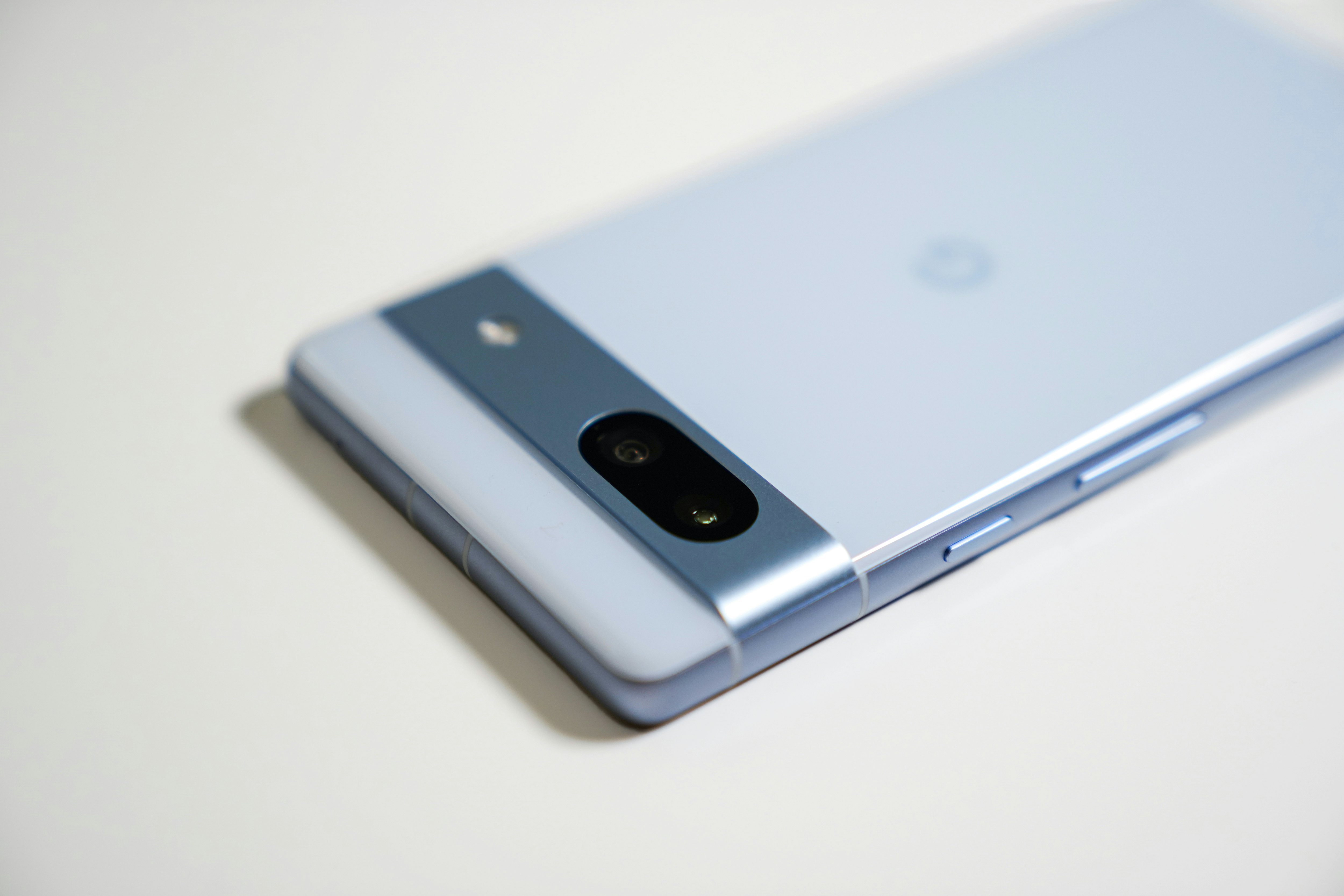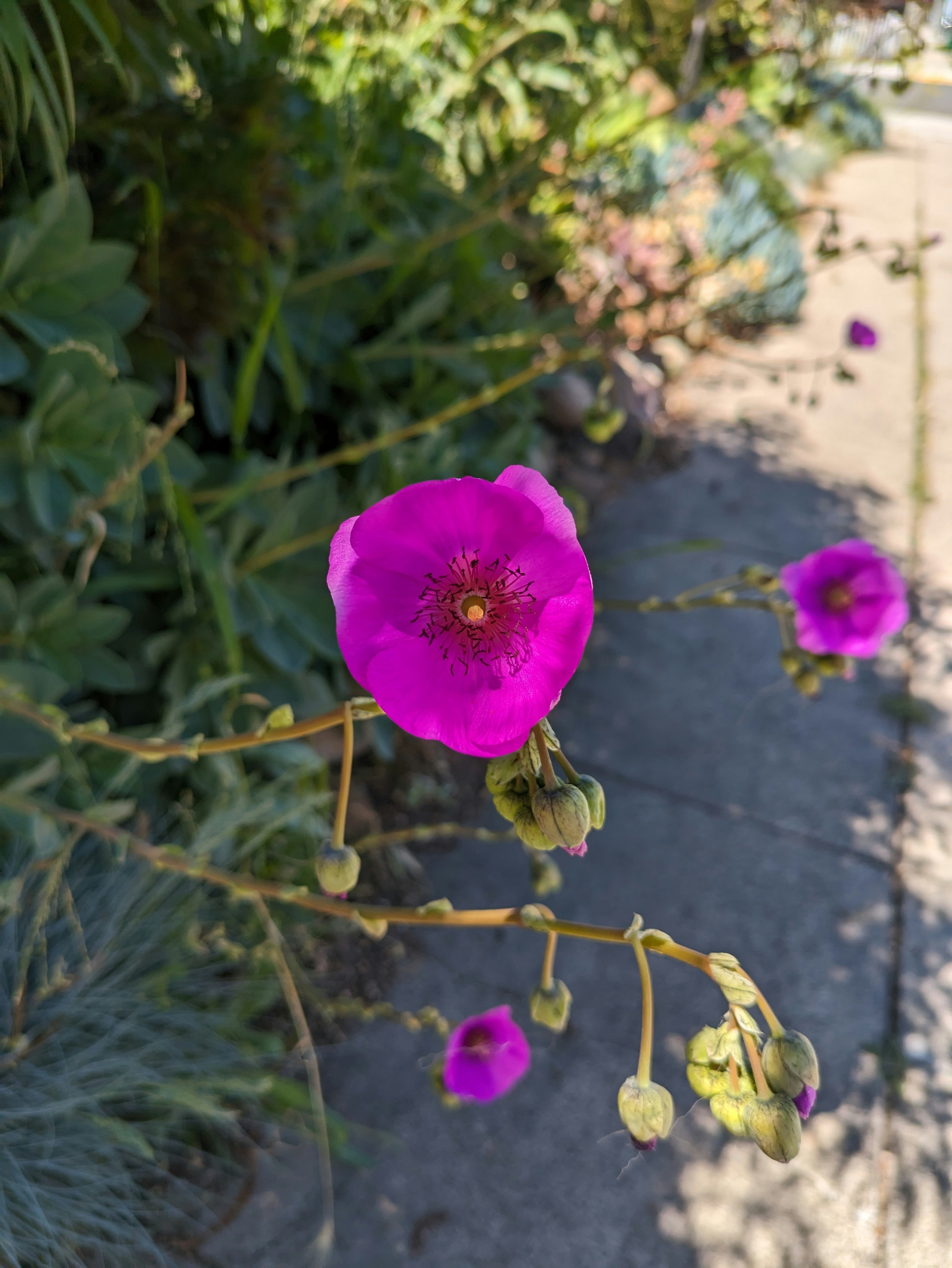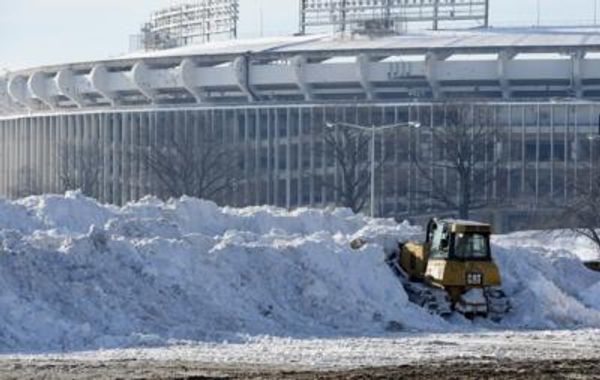
How much of the Google Pixel 7 and 7 Pro can you get in the more affordable Pixel 7a? A shockingly good amount, actually.
For $100 less than the Pixel 7 ($599) and $400 less than the Pixel 7 Pro ($899), the $499 Pixel 7a makes a strong case for not spending more on Google's high-end phones. Phone makers usually try to upsell their pricier models, but Google is downselling.
Contrary to the price, the display, the cameras, the chip performance, the battery life, the build quality, and the AI-powered Android experience are not downgrades or mid-range at all. In almost every way that matters, the Pixel 7a is basically a flagship phone without the flagship price.

Thick Is Good
The Pixel 7a is delightfully thick. Phone makers have largely overcome their allergy to thin phones. It feels good to grab Google’s new device and know I’m getting something easy to hold, has top-notch performance, and gets respectable battery life.
As in years past, the Pixel 7a is a visual riff on the Pixel 7 and 7 Pro from last fall. The Pixel 7a’s camera bar has an aluminum finish, and that 100 percent recycled aluminum carries over to the rails on the edge of the phone and its 6.1-inch, 90Hz display. This year, the A-series Pixel comes in four colors: white (Snow), black (Charcoal), blue (Sea), and exclusive to the Google Store, pink-orange (Coral). And unlike the Pixel 6a (which is hanging around at a new lower $399 price), if you plop that colored plastic back onto a Qi wireless charger, the Pixel 7a will actually charge.

Pixel 7a Specs
- Display: 6.1-inch OLED ( 2,400 x 1,080 resolution), up to 90Hz refresh rate
- Chip: Google Tensor G2
- RAM/Storage: 8GB LPDDR5 RAM + 128GB
- Battery: 4,385 mAh + wireless charging
- Rear cameras: 64-megapixel (f/1.89) main + 13-megapixel (f/2.2) ultrawide
- Front camera: 13-megapixel (f/2.2) 95-degree FOV
In day-to-day use, the Pixel 7a feels just as capable as the Pixel 7 and 7 Pro. Google’s taken care to highlight the “adaptive brightness” of the 7a’s display, and moving in and out of doors, it remains fairly legible in all lighting conditions. The upgrade from 60Hz to 90Hz in comparison to the Pixel 6a is also a welcome improvement in terms of fluid swiping and scrolling across Android 13. But the main difference I noticed between the Pixel 7a and Pixel 6a was how much faster the whole process of getting into the phone felt.
Both A-series Pixels have under-display fingerprint readers. At release, I felt like the Pixel 6a was an improvement over the Pixel 6 and the Pixel 6 Pro, which could both lag in reading a thumb, but the Pixel 7a absolutely takes things further. The fingerprint reader is more reliable, and because the Pixel 7a runs on the same Tensor G2 as the Pixel 7 and 7 Pro, it also includes Face Unlock for an even faster way in. Unlike an iPhone’s Face ID, which relies on a depth sensor (among other sensors) to identify a user, Face Unlock just uses the selfie camera. It won’t work in low light for that very reason, but the added convenience it brings in any other scenario is well worth the trouble. It’s those small details that make the Pixel 7a pleasant.
Same Old AI Tricks

Like Apple’s own custom chips, it’s sometimes hard to grasp how much of a performance bump you’re getting moving between Google’s Tensor chips. The Tensor on the Pixel 6a allowed it to handle Google’s various AI-powered tasks on-device with little issue, and the same remains true with the Pixel 7a and the Tensor G2.
Bundled with the Tensor G2 on the Pixel 7 and 7 Pro were several call-focused features, all of which are present on the Pixel 7a. Direct My Call simplifies navigating the phone trees of customer service lines into an actual on-screen interface you can tap through, saving you the trouble of waiting on the line. I see how this could be helpful, and after testing it with the Home Depot customer service line (one of Google’s recommended examples), it works as expected. But maybe I’m showing my age because I really don’t see myself using this very often.
Clear Calling, an AI-powered audio processing feature for lowering background noise, similarly helps where it should, in line waiting for a bagel, standing in the bathroom with the shower running (I had to test it somehow), but it’s not exactly revelatory.
Hold My Call, an older trick originally bundled in with Google Assistant, maybe the only one I’ve used and enjoyed. Why shouldn’t my phone sit on hold and poke me when I actually need to speak?

I think it's telling that I still find the Pixel’s best feature to be voice dictation. Dictating texts on the Pixel 7a is faster and less error-prone than on my iPhone 13 mini. I honestly love it; it’s just not the most thrilling feature to hang your hat on, you know? Luckily, the Tensor G2 is powerful enough on its own for the other resource-intensive tasks you might need to do, just don’t expect any miracles. If there’s anything I’ve realized in the last half a year that the Tensor G2 has been available, it's that it’s not quite batting in the same league as Qualcomm’s high-end Snapdragon 8 Gen 2. You’ll be able to plow through some battles in Honkai: Star Rail and glide around in Netflix’s new game Laya’s Horizon, but it won’t quite feel as effortless on the Pixel 7a as it might on another phone with a Snapdragon chip.
In terms of efficiency, maybe that’s a trade-off that’s worth it. Google promises “over 24 hours” of battery life, and even more (72 hours) with Extreme Battery Saver on. With light use, a few messages here, an hour of music streaming on Apple Music there, and a dash of Twitter and Instagram, that was consistently true. I got almost 48 hours of battery on multiple occasions. For a day of heavy testing, playing taxing 3D games, using the cameras for an extended period of time, and generally just turning the screen on and off a lot, I ended the day at close to 30 percent. That behavior is admittedly unusual for me and probably most people who would consider the Pixel 7a, which bodes well for its longevity and ability to carry on the Pixel 6a’s title as a battery life champ.
Another Good Camera

The Pixel 7a has a higher megapixel main camera than the Pixel 7 Pro. At 64 megapixels compared to the Pixel 7 Pro’s 50 megapixels, it’s a noticeable difference on paper, especially when we always expect flagship smartphones to have the largest numbers (Samsung’s Galaxy S23 Ultra has a 200-megapixel camera). But as you may already know, more megapixels does not always mean better image quality.
The Pixel 7 Pro has fewer megapixels but a larger image sensor (1/1.31-inch versus the Pixel 7a’s 1/1.73-inch), which is supposed to help with low-light performance and capturing more information for all of the processing and pixel-binning that Google does with each photo. Really, the Pixel 7a’s boost in megapixels is another form of futureproofing for the device.



Setting that aside, I was generally happy with the photos I took with the Pixel 7a’s main camera. In normal lighting conditions, I noticed the extra detail when I zoomed in. Interestingly, those shots also felt warmer on average than past Pixels. I always associate Google’s photo styling with a cool, crisp, Pacific Northwest-ness compared to the iPhone’s brighter “It’s California!” aesthetic, but the Pixel 7a camera leans ever so slightly in Apple’s direction.



Along with the typical Night Sight and Portrait Mode settings that Google includes on all Pixel devices, the Pixel 7a has a Long Exposure mode for capturing a sense of motion in a still photo, and Super Res Zoom for getting decent AI-enhanced long-distance shots well outside what the main optical lens allows. Zoom shots are still very impressive for what is essentially an enhanced crop of the center of an image taken from the 64-megapixel shooter, but I was caught off guard by just how subtle the portrait shots seemed on the Pixel 7a. The background is blurred, but I’m not sure the average person would notice it unless they’re paying attention. I still prefer it to the unnatural look of some shots on the Galaxy S23 Ultra, but it's worth noting.



At night, the Pixel 7a is able to use Google’s Night Sight to turn around poorly lit disasters into compelling pictures. Mostly. You still need steady hands and for your subject to stay still for the best results, but overall I found the Pixel 7a to be consistent with what I could get out of the Pixel 7 Pro, except for some very edge cases in dim lighting.
Should You Buy It?

If you're looking at the Pixel 7 and Pixel 7a and wondering which phone to buy, get the new guy. The spot-the-difference basically comes down to: the Pixel 7 has a you-won't-notice-it larger screen, a you-won't-notice-it thinner bezels, and a you-won’t-notice-it plastic composite back. Trust me when I say you're not losing much midway through this cycle of the Pixel 7 series. Save the $100 and buy a pair of Pixel Buds A-Series instead.
There’s some camera weirdness, and I wish the AI capabilities of the Tensor G2 were being thrown at something more interesting, but the Pixel 7a feels like it's laying some great groundwork for the next few years of software updates. Google hasn't quite cracked its Pixel strategy (read: sell more devices), but it continues to put out solid A-series phones. With 95 percent of the Pixel 7's features, I have to wonder why the middle model exists now that the Pixel 7a is here and costs less.
Photographs by Raymond Wong and Ian Carlos Campbell







